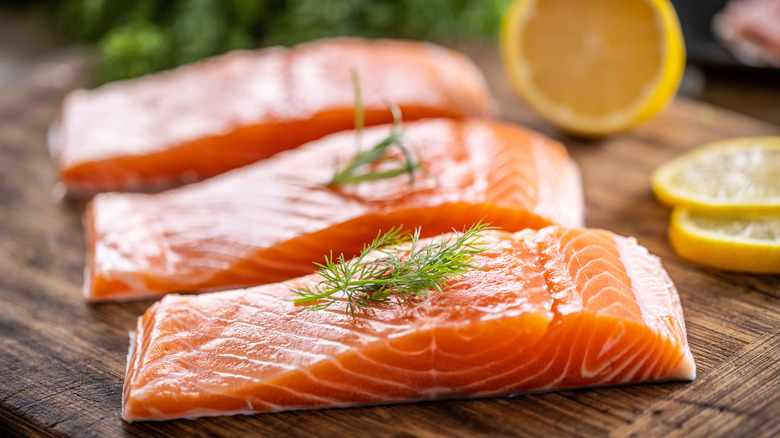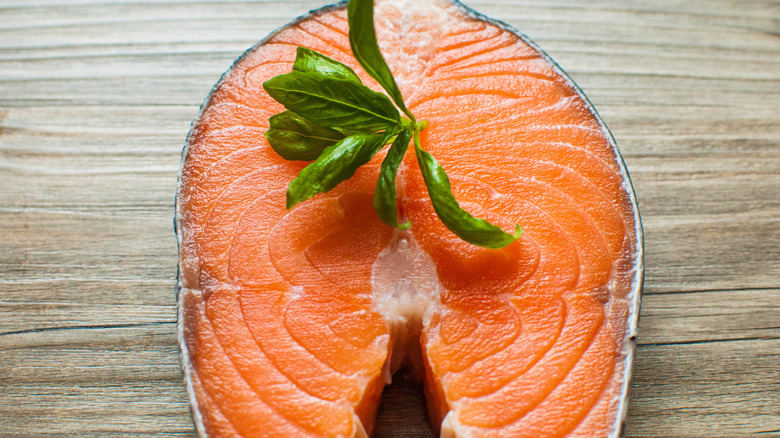Is It Worth It To Splurge On More Expensive Salmon?
Is expensive salmon always worth the higher price tag? Generally speaking, yes, it is worth it to splurge on costlier salmon. Like an expensive wagyu steak, the higher price tag on certain varieties of salmon reflects the superior quality and taste of the fish. According to a seafood expert, this largely has to do with the salmon's origin.
Robert DiGregorio, director of seafood quality at Fulton Fish Market, told Chowhound exclusively, "People who believe all salmon are the same are missing out on some great eating." There are several different species of salmon, the most popular ones for eating being Atlantic, Chinook (King), Sockeye, Coho, and Pink salmon. DiGregorio explains that, not surprisingly, different species of salmon taste differently. For instance, Coho has a delicate texture and subtle flavor compared to the meaty, buttery, and rich Chinook.
However, he points out, "Even salmon of the same species can have different flavor profiles depending on where they're from. In the fish business it's generally agreed upon that Chilean salmon is not as good as European salmon, even though they are the same species. Different factors contribute to this: water quality, feed quality, pen density, etc." Chilean salmon (salmon farmed in the Patagonia region of Chile), is "perfectly edible," says DiGregorio, "but if you want a piece of buttery, melt in your mouth salmon then try a piece of Faro Island Atlantic salmon or a piece of New Zealand King salmon." Although they are more expensive, these species of salmon are worth the higher price tag if you want superior tasting fish.
Tips for selecting superior salmon
There's much to know about selecting salmon, including the differences between farmed vs. wild salmon and the reason king salmon is so expensive. As seafood expert Robert DiGregorio explains, not all salmon is the same, therefore it's helpful to follow a guide to buying salmon at the grocery store.
Besides knowing the species and origin of the salmon, choosing quality fish starts with appearance and aroma. DiGregorio says, "Look for salmon fillets or portions that have an even, natural color, firm flesh and a clean, fresh smell. Avoid dry looking fillets and fillets that are separating along the muscle seams." If you poke the fish with your finger, it should feel firm and regain its shape; an overly soft and squishy feel is a red flag. Any brown spots or discoloration is also a bad sign, although keep in mind that some King salmon do have an ivory color.
There are several different cuts of salmon with varying fat content and texture, including center cuts, fillets, tail pieces, bellies, and collars. According to DiGregorio, the cut you should choose depends on how you are going to cook it. He says, "For salmon burgers you can use cuts closer to the tail. Don't forget salmon collars for the grill or beautiful center cut salmon portions for a more elegant presentation." Collars might not be as elegant as center cuts or fillets but they are budget-friendly and have an even thickness which makes them perfect for grilling.

